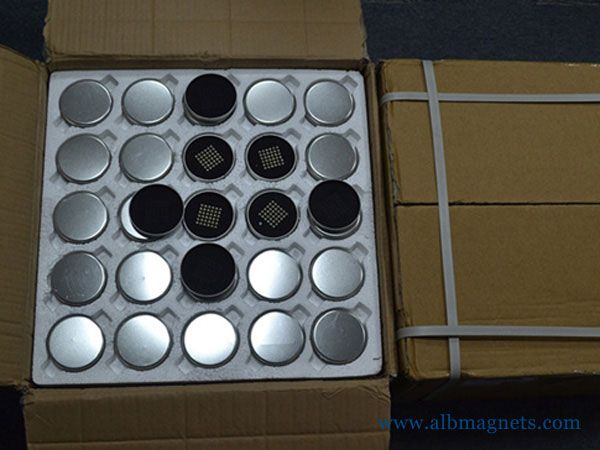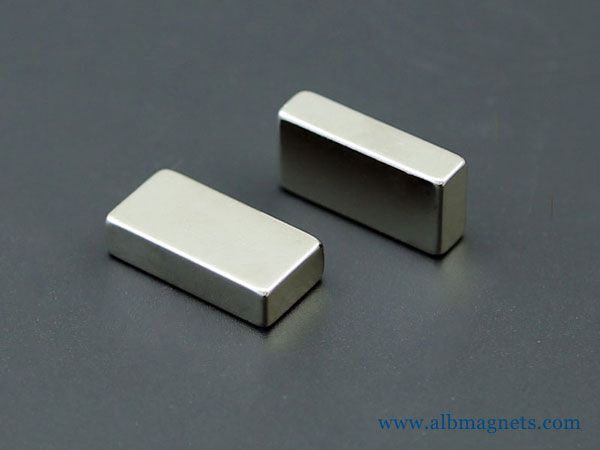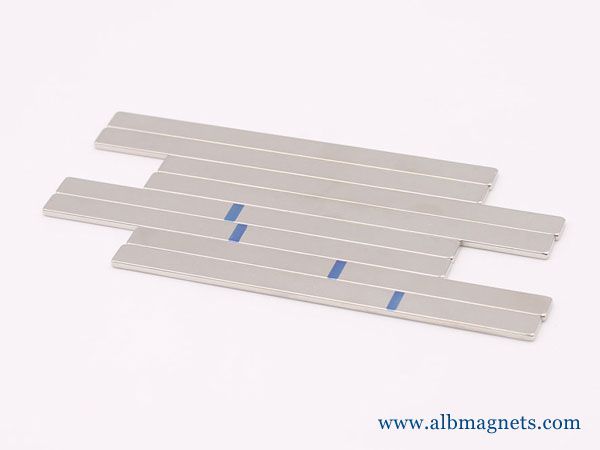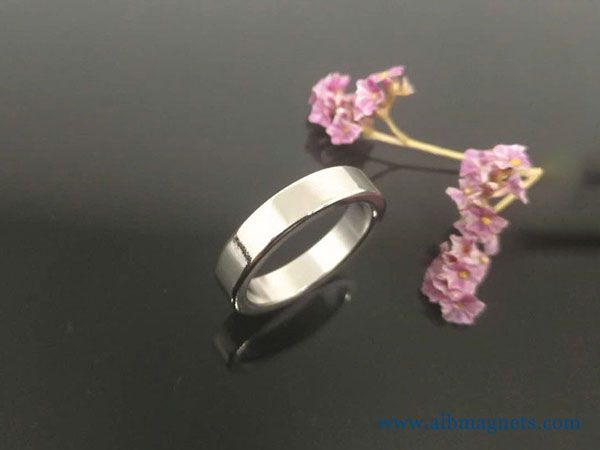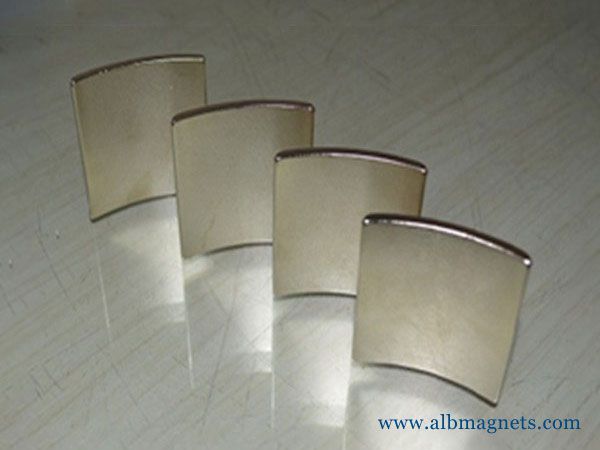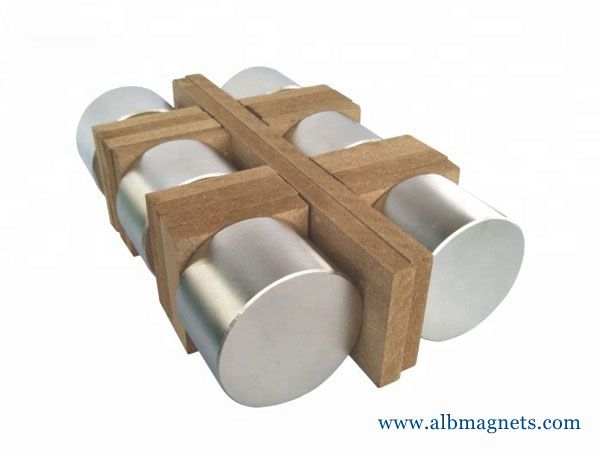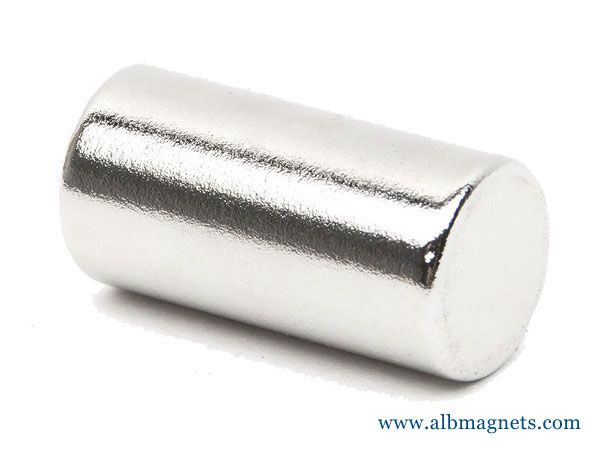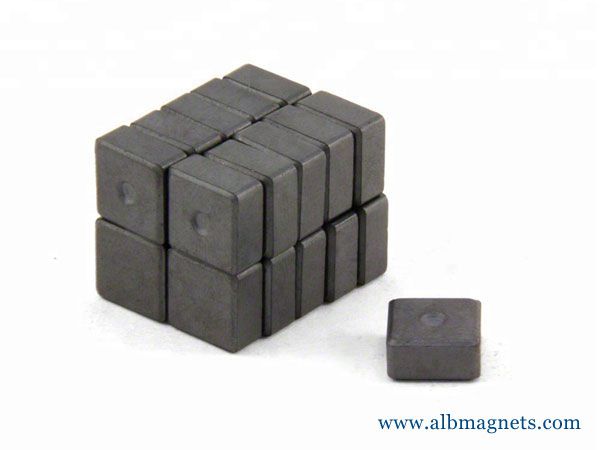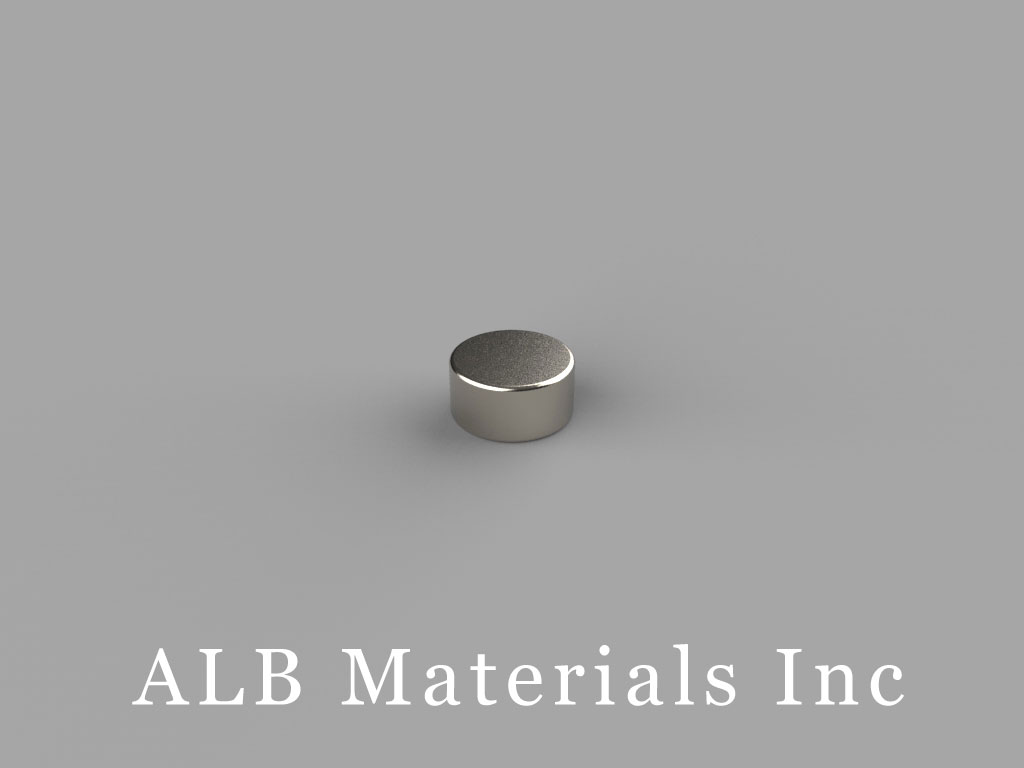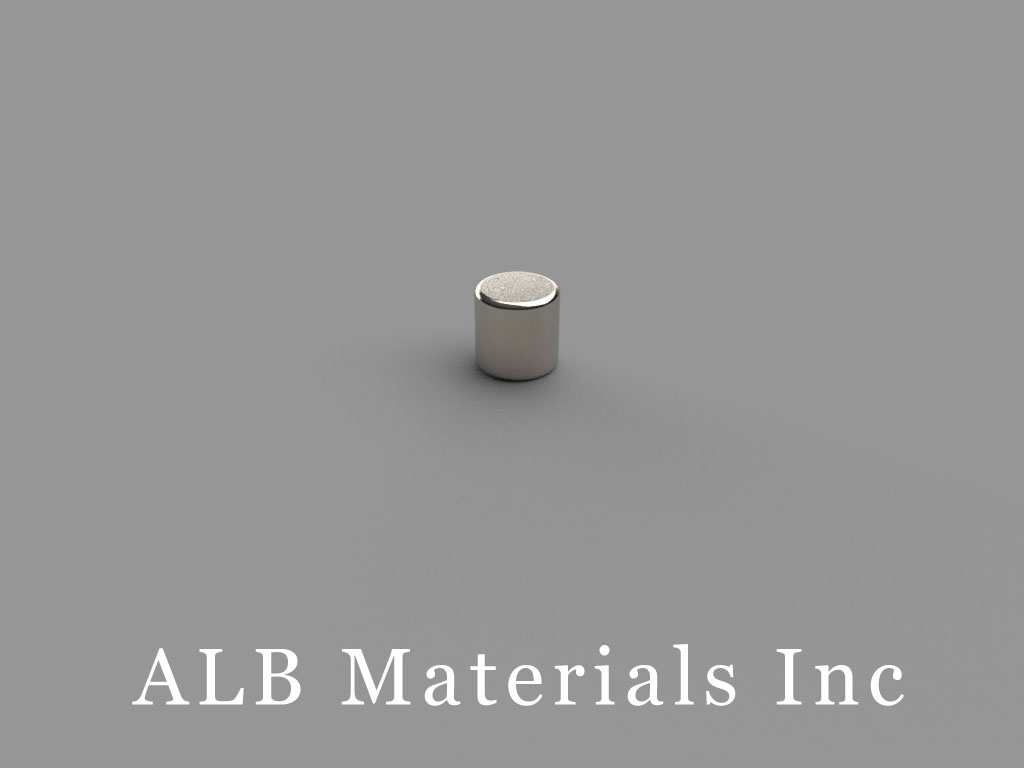401 Ryland St. Ste 200-A,
Reno, NV 89502
United States
E-mail: sales@albmaterials.com
- DA4-N52 Neodymium Magnets, 5/8 inch dia. x 1/4 inch thick
- DX88-N52 Neodymium Magnets, 1 1/2 inch dia. x 1/2 inch thick
- D-D4H1-N45 Neodymium Magnet, 4x1mm Disc Magnet
- B50x20x15mm Neodymium Magnet, 50 x 20 x 15mm Block Magnet
- BX0C8-N52 Neodymium Magnets, 1 inch x 3/4 inch x 1/2 inch thick
- B552 Neodymium Magnets, 5/16 inch x 5/16 inch x 1/8 inch thick
- DZX09 Neodymium Magnets, 4 inch dia. x 9/16 inch thick
- BY0Y06 Neodymium Magnets, 2 inch x 2 inch x 3/8 inch thick
- DC6PC-WHT Plastic Coated Neodymium Magnets
- D-D12.7H6.35/P Neodymium Magnet, 12.7x6.35mm Disc Magnet
- D10x12mm Neodymium Magnet, 10 x 12mm Cylinder Magnet
- MMS-A-X0 Standard Mounting Magnets
- C-D12.7H25.4-N45 Neodymium Magnet, 12.7x25.4mm Cylinder Magnet
- C-D7H12-N48 Neodymium Magnet, 7x12mm Cylinder Magnet
- D4C Neodymium Magnets, 1/4 inch dia. x 3/4 inch thick
- R-OD8H3ID6.1-N50HBE Neodymium Magnet, OD8xID6.1x3mm Ring Magnet
Can Steel Be Magnetized
can steel be magnetized
Can unmagnetized steel be magnetized? Yes, all that is necessary is to line up the free electrons in all the atoms in a sample of steel or iron in the same direction.
One way of magnetizing steel is to wrap the electric wire around the steel multiple times and then run a current through the wire.
This will create an electromagnet.
The steel will remain somewhat magnetized after being in the electromagnetic field.
A moving electric current creates a magnetic field according to the left-hand rule.
The fingers of the left hand represent the moving electrons and the thumb indicates the direction of the magnet field created by the moving electrons.
A piece of steel or iron can be "stroked" with a strong magnet.
Repeated stroking in the same direction will orientate the movement of the electrons in the atoms so that the magnetic field of all ( most) of the atoms are facing the same direction.
This can also be accomplished by placing a piece of steel or iron is a strong magnetic field and leaving it there for a period of time.
( note it is easier to magnetize a piece of soft iron than hardened steel. The harder the steel the harder it is to magnetize it.)
Iron Fe number 26 has 8 valance electrons. These valance electrons are in the 4s and 3 d orbitals. # 4s^2 3 d^6 #There are five 3 d orbitals.
The 4s and 1 3d orbital have two electrons one with a positive spin and one with a negative spin which cancels each other out.
There are four 3 d orbitals that have only one electron.
If all four have the same spin ( either positive or negative) this creates a magnetic field due to the movement of the electrons.
If the magnetic fields created most of the atoms are pointing the same direction the piece of Ferrous material ( steel or iron) will be magnetic.
How to Magnetize & Demagnetize Metal
Magnetization is possible only with iron or iron alloys, such as steel. Screwdrivers are commonly magnetized this way to attract screws.
Magnetizing metal involves lining up the positively and negatively charged particles within the metal to create a stronger attraction with oppositely charged metal objects.
You use a magnet to do this.
Opposite ends of a magnet have densely packed, and oppositely charged, particles that attract particles in other metals.
These particles are strong enough that, over time, they can line up the particles in another metal in the same manner of its own particles.
Magnetization is possible only with iron or iron alloys, such as steel.
Screwdrivers are commonly magnetized this way to attract screws.
Magnetizing
Place the magnet at one end of the piece of metal.
The magnet must make as much contact with the metal as possible.
Place light pressure on the magnet and rub the metal in one direction only.
The magnetization will take some time to accomplish so continue rubbing until the iron or steel attracts other pieces of metal.
Repeat the magnetization process, as necessary.
The metal will lose its magnetization over time and need to be remagnetized.
Demagnetizing
Place the magnet at the opposite end of the metal from where you magnetized it.
Again, the magnet must make as much contact with the metal as possible.
Rub the metal with the magnet in the opposite direction that you used to magnetize it.
Continue rubbing until the metal no longer attracts other metal.
Wait out the magnetization, if desired.
It is not necessary to demagnetize metal if time is not an issue because metal loses its magnetism over time.
How to magnetize a screwdriver or other steel objects.
Magnetize a Screwdriver Animation
A steel object such as a screwdriver can retain a small amount of magnetism after a neodymium magnet is taken away. It won't last forever, but you can temporarily magnetize it. Here's how:
Take one end of a neodymium magnet and stick it to the base of the screwdriver's shaft. Slide the magnet along the length of the steel shaft, all the way to the end. Then remove the magnet from the shaft, and repeat a few more times. The steel is now fully magnetized!
Do not rub the magnet back and forth -- moving it in opposite directions will work to cancel each other out.
You can use this same method to re-magnetize old ceramic, ferrite, or Alnico magnets. This is a great way to re-magnetize the needle of a compass. Choose a magnet sized like what you're trying to magnetize, though it isn't too critical.
Magnetic Response of Stainless Steels
Magnetic response – or the lack of it – is often one of the first things that people think of as a basic property of stainless steel.
The response of stainless steel to a magnet is an interesting physical property and can be a useful sorting test but it is not as clear-cut as is often thought.
WHAT ARE THE BASIC MAGNETIC PROPERTIES OF MATERIALS?
Ferromagnetic Materials
Materials that are strongly attracted to a magnet (either permanent or electro) and that can themselves form permanent magnets.
This is the usual property when a material is said to be “magnetic”.
Magnetic Permeability
The ease by which a magnetic material can be magnetized is expressed by the Magnetic Permeability.
Values close to 1.0 show the material is non-magnetic.
Hard or Soft Magnetic Characteristics
Magnetic materials can be classified as “Hard” or “Soft”.
Hard magnetic materials retain a large amount of residual magnetism after exposure to a magnetic field.
Soft magnetic materials can be magnetized by a relatively small magnetic field and when this is removed they revert to low residual magnetism.
Non-magnetic Materials
Materials that show no response to a magnet.
Curie Temperature
Some metals have a temperature at which they change from ferromagnetic to non-magnetic.
For common carbon steels, this happens at about 768°C.
WHICH METALS ARE MAGNETIC?
All common carbon steels (including mild steel), low alloy steels, and tool steels are ferromagnetic.
Some other metals such as nickel and cobalt are also ferromagnetic.
All stainless steels grades with the exception of the austenitic grades are also magnetic – all ferritic grades (eg 430, AtlasCR12, 444, F20S), all duplex grades (eg 2205, 2304, 2101, 2507), all martensitic grades (eg 431, 416, 420, 440C) and all precipitation hardening grades (eg 630/17-4PH).
Even although the duplex grades are mixtures of austenite and ferrite they are still strongly attracted to a magnet.
WHICH METALS ARE NON-MAGNETIC?
Most non-ferrous metals such as aluminum and copper and their alloys are non-magnetic.
Austenitic stainless steels, both the common 300-series (Cr-Ni) and the lower nickel 200-series (Cr-Mn-Ni) are non-magnetic.
It is common for wrought austenitic stainless steel to contain a very small amount of ferrite, but this is not sufficient to significantly affect magnetic performance except in very critical applications.
WELDS AND CASTINGS
Castings in austenitic stainless steels have slightly different compositions compared to their wrought counterparts.
The cast version of 316L for instance is grade CF-3M.
Most “austenitic” cast alloys are very deliberately made so that they have a few percent of ferrite – this helps prevent hot cracking during casting.
A weld can be viewed as a small, long-lasting, and for the same reason as detailed above austenitic welds have about 4 – 8% ferrite.
In the case of both welds and castings the small number of ferrite results in a small amount of magnetic response, but it can be readily detected with a good hand-held magnet.
With a suitable “ferrite meter” this magnetic response can in fact be used to measure the amount of ferrite in a weld.
If a weld is required to be zero ferrite content special consumables are available.
“Ferrite-free” plate can also be sourced, or the existing stock 316 plates can be tested to confirm ferrite level.
“Ferrite-free” products are specially produced for a few specific corrosive conditions, not usually for their magnetic properties.
THE EFFECT OF COLD WORK
Even although wrought austenitic stainless steels are non-magnetic in the annealed condition they may develop magnetic response when cold worked.
Cold work can transform some austenite to martensite.
This has a dramatic effect on tensile strength and even more so on yield strength;
a heavily cold drawn grade 304 wire can achieve a tensile strength of up to around 2000MPa.
Such a highly worked 304 will also be very strongly attracted to a magnet.
Grades with higher amounts of austenite forming elements – nickel, manganese, carbon, copper, and nitrogen – formless martensite when cold worked, so do not become so strongly magnetic.
This can be evaluated as the ratio of austenite former elements divided by ferrite former elements, or simply as the Ni/Cr ratio.
Grade 316 products usually only become slightly magnetic and 310 and 904L are almost totally non-magnetic no matter how severely cold worked.
Grade 301 on the other hand has a lesser amount of nickel and work-hardens even more rapidly than does 304 and becomes strongly magnetic after even a small amount of cold work.
These comparisons are shown in the graph above.
Note that different heats of steels of the same grade may exhibit different magnetic responses because of minor differences in the amounts of each element.
HEAT TREATMENT
If a piece of austenitic stainless steel has been made to respond to a magnet by cold work this can be removed by a solution treatment – the standard treatment of heating to about 1050°C (depending on the grade) followed by water quenching or other rapid cooling.
The high temperature allows the “strain-induced martensite” to re-form as austenite and the steel returns to being non-magnetic.
It is also returned to being low strength.
DOES MAGNETIC RESPONSE MATTER?
The magnetic response has no effect on any other property.
Cold drawn 304 (and to a lesser degree 316) is attracted to a magnet, but this has no effect on the corrosion resistance.
Some of the most highly corrosion-resistant stainless steels are strongly magnetic… examples are the duplex and super duplex grades and highly alloyed ferritic grades such as 29-4C.
Cold drawn 304 also has high tensile strength, but this is not due to the magnetic response – both the magnetic response and the high strength are due to the cold work.
Applications, where the absence of magnetic response may be required, include MRI equipment and in naval mine-hunter vessels.
Specialist guaranteed low magnetic response stainless steels can be sourced for such applications.
MAGNETICALLY SOFT STAINLESS STEELS
Magnetically soft steels are used in electrical applications involving changing electromagnetic induction.
Solenoids and relays are typical examples, and where these components also need to have corrosion resistance ferritic stainless steel can be a good choice.
For critical applications specialist, ferritic bar grades are available with guaranteed magnetic properties.
SORTING OF STEELS
The magnetic response of a piece of steel is a quick and qualitative test that can be useful for sorting grades of stainless steel.
Other qualitative tests are listed in Atlas TechNote 1.
Grade Sorting by Magnetic Response
What Can Be Sorted
Austenitic (both 300-Series and 200-series) stainless steels from other steels.
All other steels are attracted to a magnet, including all the ferritic, duplex, martensitic and precipitation hardening stainless steels.
The only other non-magnetic steels are the austenitic 13% manganese steels (eg “P8”).
Method
Note response, if any, when a permanent magnet is brought close to the steel.
Tips & Traps
Some austenitic stainless steel grades, particularly 304, are to some degree attracted to a magnet when cold worked, eg by bending, forming, drawing, or rolling.
Stress-relieving at cherry-red heat will remove this response due to cold work, but this stress relief may sensitize the steel and should not be performed on an item that is later to be used in a corrosive environment.
A full anneal is acceptable, however.
Even although duplex grades have only half the amount of the magnetic ferrite phase compared to fully ferritic grades such as 430, the difference in the “feel” of a manual test is unlikely to be enough to enable sorting duplex steels from ferritic, martensitic or precipitation hardening grades.
Austenitic stainless steel castings and welds are also usually slightly magnetic due to a deliberate inclusion of a small percentage of ferrite in the austenitic deposit.
Part of the content in this article is reproduced from other media for the purpose of transmitting more information and does not mean that this website agrees with its views or confirms the authenticity of its content. It shall not bear direct responsibility and joint liability for the infringement of such works.
If there is any infringement, bad information, error correction, and other issues in the content of this page, please contact us at info@albmaterials.com
Link to this article: https://www.albmagnets.com/blog/can-steel-be-magnetized.html
How to choose and buy a strong neodymium magnet? ALBMagnets is a professional company for strong magnet design and manufacturing,
providing you with reliable N35, N38, N42, N52, N42SH and other grade super neodymium magnets and SmCo rare earth magnets.




